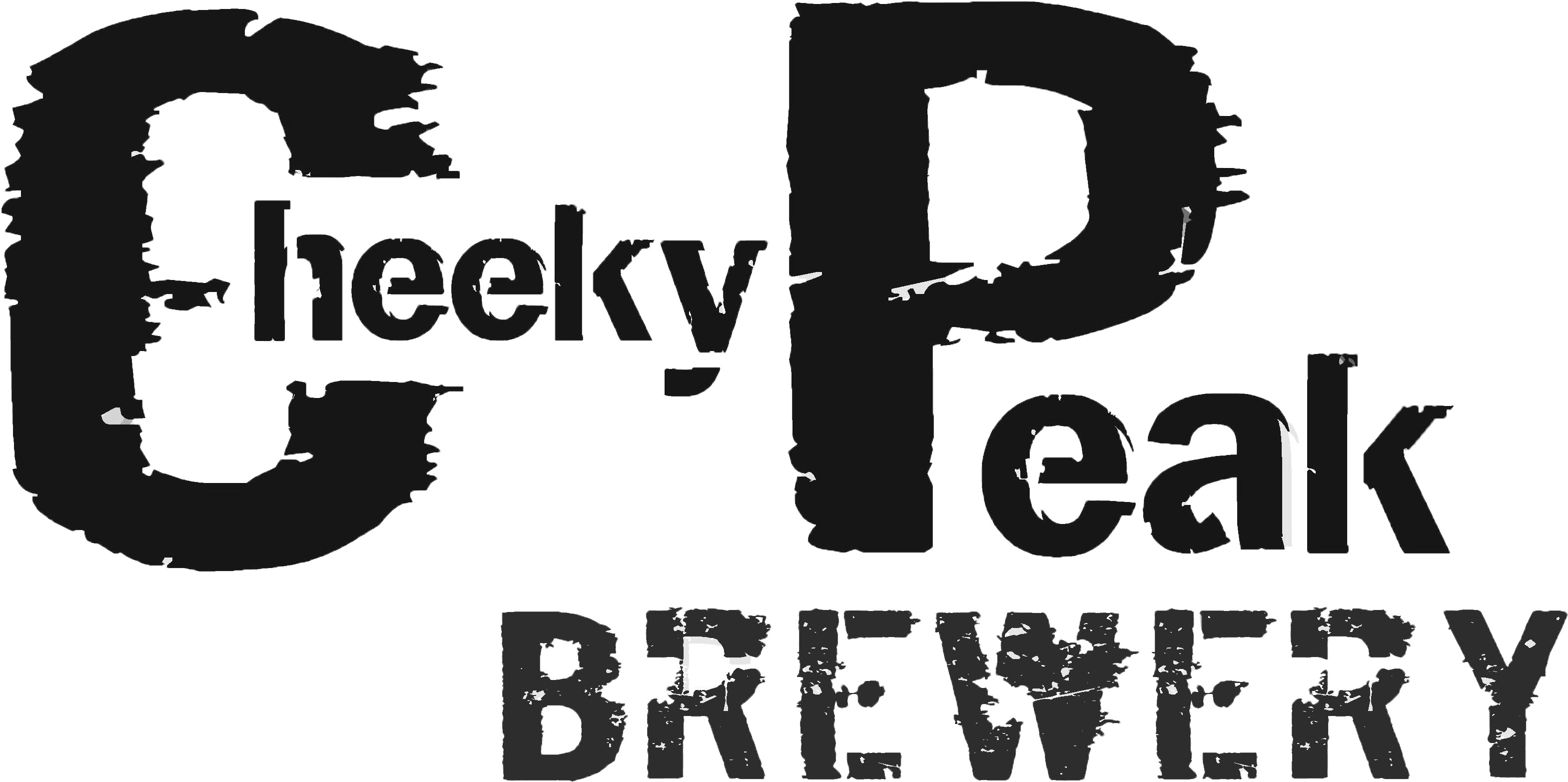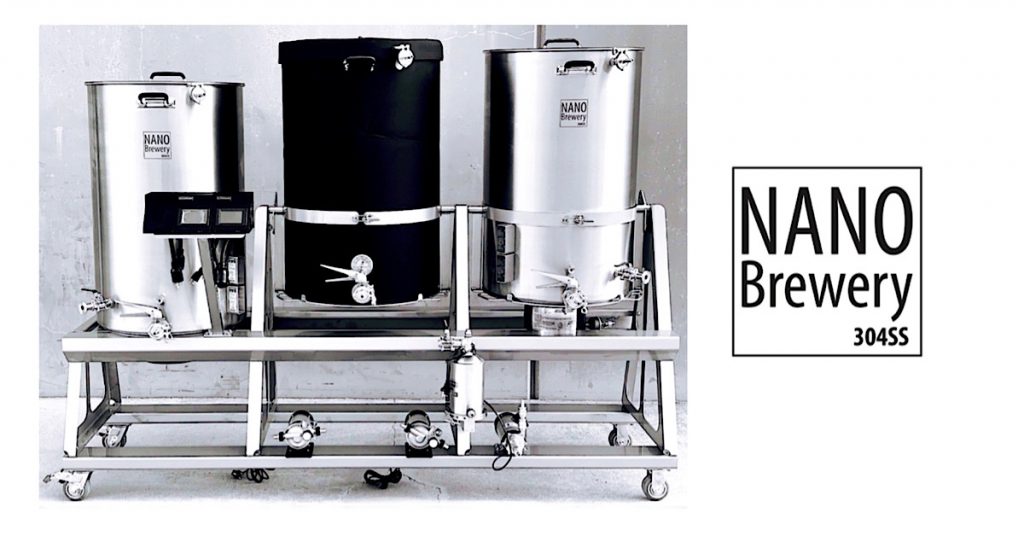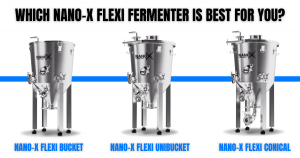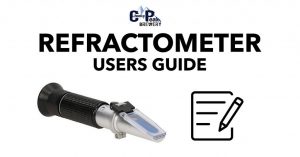In this article we look to explain how simple it is to maximise wort production in a brew day using a NANO 3 vessel brewing system (3v). The purpose of this blog is to help you think more broadly about the 3v systems you have or are considering and how brewing production can be increased through simple change or broader thinking of how you use a NANO 3v system.
The greatest feature about a 3 vessel system is the output efficiencies in production, efficiencies that will always ensure the relevance of the 3v as a system within the brewing market. In this blog we examine the usage of the 3 vessels with in a NANO 3 vessel system and how this can best be utilised to maximise output.
Double Batching
Most people decide to purchase a 3v system due to its double batching capability and the efficiency a 3v has when doing so. With a NANO 3v system there are already double batching efficiencies as opposed to a single vessel system, by being able to mash a second batch whilst you are in the boiling phase of your first batch. Cutting time out of the second batch when brewing is important to the needs of a number of brewers but we go even further and think more broadly or outside the circle to bring to light how even greater efficiencies can be achieved when double batching on a 3v.
Traditional Brewing on a 3 Vessel System:
The process of brewing on a NANO 3 vessel system is very simple. There are 3 vessels, A Hot Liquor Tank (HLT), Mash Tun and a Boiler Kettle. In the first instance water is added and heated in the HLT and transferred to the Mash Tun where grain is added and mashed for a period of 60 minutes to create wort. Once mashing is complete water is then transferred from the HLT into the top of the Mash Tun at the same time wort is transferred from the Mash Tun into the Boiler Kettle, this process is called sparging. Once the Boiler Kettle has the correct volume of wort the boiling process begins. Wort is finally cooled prior to transferring into a fermenting vessel where yeast is added and the wort becomes beer.
1. Brewing Time Break Down
Heating water in a mash system is one of the major time consuming factors in a brew day. Traditionally in a NANO 3v system one of the 3 vessels is used as a hot water source, the HLT. Water is placed in the HLT and heated and then feeds the Mash Tun which is the middle vessel. Water from the HLT is crossed into the Mash Tun in order to Mash grain and at the end of the mashing period the water from the HLT is used to sparge the grains. In both instances there are two different temperatures required for Mash water and sparge water and both of which draw time out of a brew day to achieve. Heating and transferring water for mashing grain is around a 40 to 60 minute process, notwithstanding any set time delay feature a 3v system controller may or may not have. In either case filling and heating of the HLT and transferring from the HLT to the Mash Tun is a process that must occur and there for a time considerations in a brew day when using a NANO 3v system traditionally.
Once water is transferred from the HLT to the Mash Tun grain is added and a 20 minute to 60 minute mash period is conducted. Once Mashing is complete the fluid temperature within the Mash Tun is raised to Mash out temp between 75C and 79C, this can be done through sparging or via recirculation. Sparging begins after mashing where water is transferred from the HLT to the top of the Mash Tun and at the same time wort is transferred from the Mash Tun to the Boiler kettle. Finally it is time to remove the grain and rinse and clean the Mash Tun in order to bring the Mash Tun back into service or in readiness for the second batch. Remember you need to refill and reheat the HLT during clean-up of the Mash Tun to have the water ready to go for the Mashing process of the second batch.
Cleaning time in a double batch brewing scenario focuses around the Mash Tun. In a double scenario the Mash Tun needs to be emptied of grains and cleaned of residual malt ready to accept the next lot of water and grain for Mashing. In the case of the NANO Brewery tipping system this is very quick and easy and saves the brewer a lot of manual labour due to the tipping function of the systems Mash Tun.
In the final stage of brewing wort is crossed from the Mash Tun to the Boiler Kettle. Once wort is crossed into the Boiler Kettle time in a brew day is absorbed by heating the wort to boil temperature and then going through a typical 60 minute boil where hops are added. Once the boiling time has expired the wort needs to be cooled and transferred to the fermenter, then the boiler needs to be cleaned before it is ready to receive the next batch. These timings can be extended with whirlpool additions and other factors in the production of particular styles of beer and this time must be a consideration when commencing the Mashing period of the second batch.
Step By Step Break Down in a traditional NANO 3v usage scenario
Step 1: First Batch: Fill HLT
Step 2: First Batch: Heat HLT to strike water temp
Step 3: First Batch: Transfer water from HLT to Mash Tun
Step 4: First Batch: Put Grains into Mash Tun
Step 5: First Batch: Recirculate & Mash period
Step 6: First Batch: Refill HLT & Heat to sparge temp
Step 7: First Batch: Sparge water transfer from HLT to Mast Tun & simultaneously Transfer from Mast Tun To Boiler
Step 8: First Batch: Heat Boiler & Boil Wort
Step 9: Second Batch: Refill HLT & Reheat to strike water temp
Step 10: Second Batch: Clean and prepare Mash Tun
Step 11: Second Batch: Transfer water from HLT to Mash Tun
Step 12: Second Batch: Put Grains into Mash Tun
Step 13: Second Batch: Recirculate & Mash period
Step 14: Second Batch: Refill HLT to sparge water temp
Step 15: First Batch: Cool Wort and transfer to fermenter
Step 16: Second Batch: Clean Boiler ready to receive next batch
Step 17: Second Batch: Sparge water transfer from HLT to Mast Tun & simultaneously Transfer from Mast Tun into Boiler
Step 18: Second Batch: Heat wort to boil Temp
Step 19: Second Batch: Boil wort and add hops
Step 20: Second Batch: Cool Wort and transfer to fermenter
Broader Thinking: Improve Brew Day Efficiencies and Dramatically Shorten Batching Time
This is a simple trick but something not many brewers who own a 3v would think to apply. In every case weather commercial or at home every building or dwelling will have a hot water service to provide the tenants with hot water. In the case of a hot water service they all have some sort of ability to enable altering of water temperatures, in the case of the one we have at Cheeky Peak Brewery, it is as simple as pressing a button on a digital pad installed. The hot water service at Cheeky Peak Brewery has temperature adjustment capability between 40C and 80C and enables instant hot water between these temps at a touch of button.
Instant Hot Water Service Use & Alterations:
At CPB we have set up our hot water service so we can change the temperature easily. The instant hot water service is feed by the mains water and runs on natural gas. To use it in a brewing situation we have altered it further and plumbed in a 3 stage filtration system to filter the water and remove any chemicals present in our mains water prior to the water entering the hot water service. This filter system does not need to be tapped in prior to the system it can also be plumbed in at the out of the system. Additionally we have added a water meter at the out of the tap fixture to measure the amount of water we are feeding into our system.
Setting up our hot water service like we have as per above we have in essence replaced the need for the HLT as we have created an instant hot water service that doubles as a HLT. We have the filtration system and a way to measure the amount of water we are imputing into the Mash Tun for strike water and for sparge water and we are able to change the temperature of the water to allow it to be used for both strike and spargewater purposes.
Mashing periods do not change but typically a mashing period is shorter than a boiling period and even shorter when you do not need to fill, heat and transfer water from a tank within a 3v system. Water is coming in at temp direct from the sauce it originally come from to fill a separate tank.
Instant Hot Water Service and System Usage Change
Hot Liquor Tank (HLT)
Using a hot water service as the HLT cuts out HLT tank filling time, heating time and transfer time from the HLT into the Mash Tun. Strike water for the Mash Tun is feed from the hot water service at instant temp direct into the Mash Tun and typically the flow rate is greater than that of the pumps on our 3v system.
Now that the hot water service has become a HLT we have no use for the third vessel in our system. In this case we look to repurpose the HLT and we change that to second boiler. So what was once a HLT becomes a second boiler for supply of wort for the second batch.
Mash Tun Feed
Feed your Mash Tun from the Hot water service and you are filling one vessel and are able to add grains straight away. With some hot water systems you may have to wait a little for the water to cool a little as it may have limitations on temperature setting, in this case combine hot water with a little cold water to ensure no lag time.
Boiler Kettles
Now we have two boiler kettles, the HLT is now a Boiler Kettle and the Boiler Kettle is still used as in a traditional 3v application. This is important as Mashing is always a shorter time period then bringing the wort to boil and then the boiling process and cooling process including any whirlpool additions. Knowing the mash period is shorter and the boiling process is longer we need to cut out the lag time in waiting for the boiler to become free so we make the HLT a second boiler. The HLT as a second boiler is free to transfer wort from the Mash Tun to the HLT.
Step By Step Break Down in a non-traditional NANO 3v usage scenario
Step 1: First Batch: Water from hot water service to Mash Tun
Step 2: First Batch: Put Grains into Mash Tun
Step 3: First Batch: Recirculate & Mash period
Step 4: First Batch: Sparge water transfer from Hot water service to Mast Tun & simultaneously Transfer from Mast Tun into first boiler
Step 5: First Batch: Heat Boiler & Boil Wort
Step 6: Second Batch: Clean and prepare Mash Tun
Step 7: Second Batch: Water from Hot water service to Mash Tun
Step 8: Second Batch: Put Grains into Mash Tun
Step 9: Second Batch: Recirculate & Mash period
Step 10: Second Batch: Sparge water from Hot water service to Mast Tun & simultaneously Transfer from Mast Tun into second boiler (was HLT)
Step 11: Second Batch: Heat wort to boil temp & boil
Step 12: First Batch: Cool wort from first boiler and transfer to fermenter
Step 13: Second Batch: Cool Wort and transfer to fermenter
3V Double Batching Machine
By creating a HLT out of the hot water service you have now created a very quick double batching system. You are able to Mash whilst you boil and boil whilst you boil. You have cut out heating time and you are shifting less fluid around during a brew day hence the steps to double batch have reduced from 20 to just 13. You have cut time out of batch one and dramatically cut time out of batch 2.
3V Double Batching Advantages and other Efficiencies
Now let’s look at other advantages. Not only have we cut time we have saved on labour costs, the most expensive cost from a commercial operation perspective and opportunity costs for home brewers. Additionally, we have enabled greater volume to sell or consume. The volumes produced on the 3v also allow for flexibility in styles as you are not restricted in double batching to brewing the same beer; two different styles of beer can be produced in the one brew session.
Other efficiencies in terms of the use of LPG or natural gas (direct fire systems) and electric heating combined allow for faster heating times as well as finer temperature control over vessels. 3v systems from NANO Brewery allow both gas and electric to be utilised. Nothing beats direct fire in terms of heating speed for LPG. Plus with the joys of finer electric temperasure control, the brewer gets the best of both worlds.
Single Vessel Systems
Single vessel system efficiencies can be found in a similar set up but they are very limited in comparison to a 3v. In a single vessel system the Mash Tun and boiler is one vessel and they do not allow for transfer of wort to another vessel to allow for mashing and boiling to occur at the same time. Single vessel systems serve a purpose but are limited in regards to brewing efficiencies and hence not as pratical as a 3v in commercial brewing setting. Single vessel systems are better served in a home brew setting due to space efficiencies.
Conclusion
We hope by presenting this article we have broadened your thinking in terms of your brewing system decision and the use and size of the system as such. Double batching and servicing the needs of a brewery at home or commercially can be altered if you think outside the circle.
Cheeky Peak has created the NANO Brewery 3v tipping system to save you time and money in cleaning and double batching. Thinking more broadly about how you use such a system can help you in your forward plaining. Additionally to compliment the tipping system we have created a third tipping option which allows the brewer to use the system in the broader context explained in this article as the HLT. If used as boiler, the third tipping option allows for all 3 vessels to be easily cleaned without heavy lifting or further potential OHS issues already presented to brewer in overall brewing operations.
Cheers
Cheeky Peak Team










